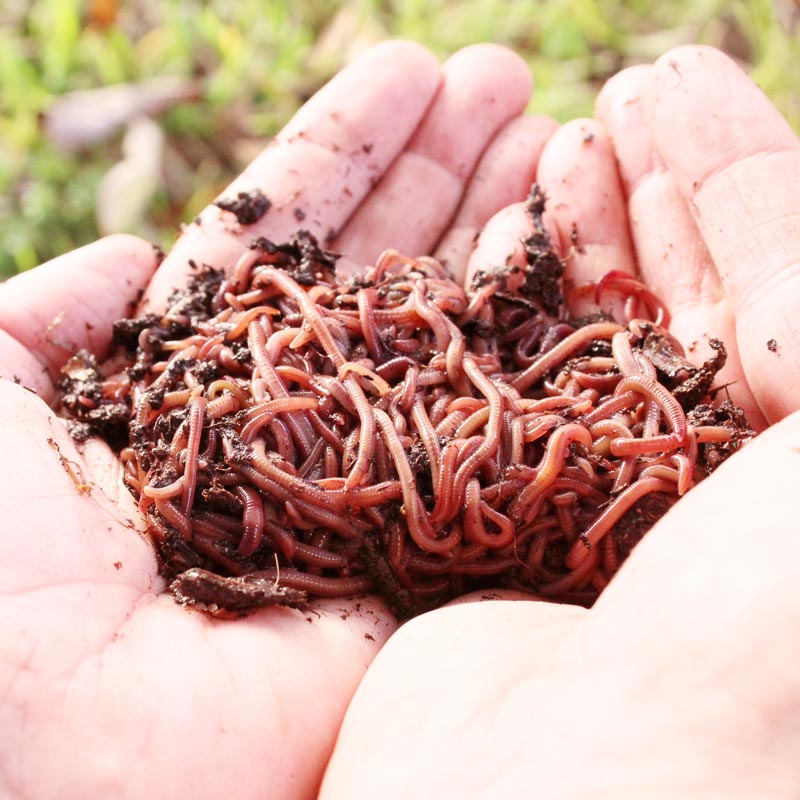Red Wigglers: The Unsung Heroes of Organic Waste Recycling
Red wigglers, or Eisenia fetida, serve as critical representatives in the natural waste recycling procedure, changing thrown out materials right into beneficial vermicompost. As the globe significantly seeks options to deal with waste accumulation and boost farming productivity, recognizing the function of these worms becomes essential.
What Are Red Wigglers?
The exceptional durability of red wigglers, medically called Eisenia fetida, underscores their critical function in natural waste recycling. These tiny, reddish-brown earthworms are usually found in decaying natural issue, such as compost heaps and manure stacks. Lake Hickory Bait. Unlike various other earthworm types, red wigglers grow in nutrient-rich atmospheres and are very effective at damaging down organic materials, making them essential for vermicomposting

(Red Wiggler Express)Along with their function in waste reduction, red wigglers add to soil wellness by improving soil structure and oygenation via their burrowing activities (Lake Hickory Bait). Their presence in composting systems not only improves disintegration rates but likewise promotes a sustainable technique to squander administration, illustrating their significance in ecological conservation efforts
Benefits of Composting With Worms
Composting with worms, particularly red wigglers, provides various advantages that improve both waste administration and dirt health and wellness. Initially, these worms effectively damage down organic waste, converting it into nutrient-rich vermicompost that enriches soil. This process accelerates decomposition, enabling a much faster recycling of cooking area scraps and various other natural materials compared to traditional composting methods.
In addition, the vermicompost generated by red wigglers is including valuable microbes, which assist enhance soil framework, oygenation, and wetness retention. This enhances the total wellness of plants, promoting vigorous development and raised returns in gardens and agricultural settings. Furthermore, using worms in composting reduces the manufacturing of greenhouse gases, such as methane, adding to a more sustainable waste monitoring system.

Just How to Start Vermicomposting
Establishing a vermicomposting system is an uncomplicated procedure that can yield considerable advantages for both waste management and soil enrichment. To start, choose an appropriate container, such as a plastic container or wooden box, with adequate air flow openings to guarantee correct air flow. The dimensions must preferably be about 2 feet by 3 feet, allowing enough area for the worms to grow.
Following, prepare bed linen product, which can include shredded newspaper, cardboard, or coconut coir. This bedding should be moistened to create a suitable habitat for the worms. Once the bed linens is in area, present red wigglers (Eisenia fetida) right into the container, generally around one pound of worms for every square foot of surface.
Following the placement of worms, include natural waste, such as fruit and veggie scraps, coffee grounds, and crushed eggshells. Avoid including milk, meat, or oils, as these can produce odors and attract pests. Finally, place the container in a shaded, temperature-controlled area to preserve optimal problems for worm task. With these actions, you will successfully start a vermicomposting system that contributes to sustainable waste administration and enhances your soil.
Preserving a Healthy Worm Bin
(Red Wiggler Express)Maintaining a worm bin growing needs regular interest and like make sure the health and wellness of the red wigglers and the performance of the composting process. Correct upkeep starts with keeping an eye on the moisture degrees; the container ought to perspire however not saturated. A good regulation of thumb is to preserve an uniformity similar to a wrung-out sponge.
Gently mixing the bed linen and food scraps every few weeks stops compaction and ensures that all worms have access to oxygen. Furthermore, it is crucial to feed the worms suitably.
If the container becomes as well warm or cold, the worms may come to be stressed out. By vigilantly taking care of these factors, one can maintain a robust and productive worm container.
Effect On Lasting Living
The successful maintenance of a worm bin not just benefits the health and wellness of red wigglers but also adds dramatically to lasting living methods. By recycling natural waste, such as cooking area scraps and lawn debris, red wigglers aid divert substantial quantities of material from landfills. This decrease in waste not only reduces greenhouse gas exhausts however also decreases the ecological concern Red Wiggler Express connected with waste monitoring.
Additionally, the castings created by red wigglers work as a nutrient-rich natural fertilizer, boosting soil wellness and promoting plant development. This natural alternative to chemical plant foods supports sustainable farming and gardening techniques, lowering reliance on artificial inputs that can harm ecological communities. Furthermore, worm composting fosters understanding of waste monitoring, motivating people and communities to take on more lasting behaviors.

Final Thought
In summary, red wigglers serve as essential factors to natural waste recycling through their efficient disintegration of natural materials. By integrating vermicomposting right into waste monitoring methods, individuals and neighborhoods can considerably reduce waste while advertising ecological sustainability.